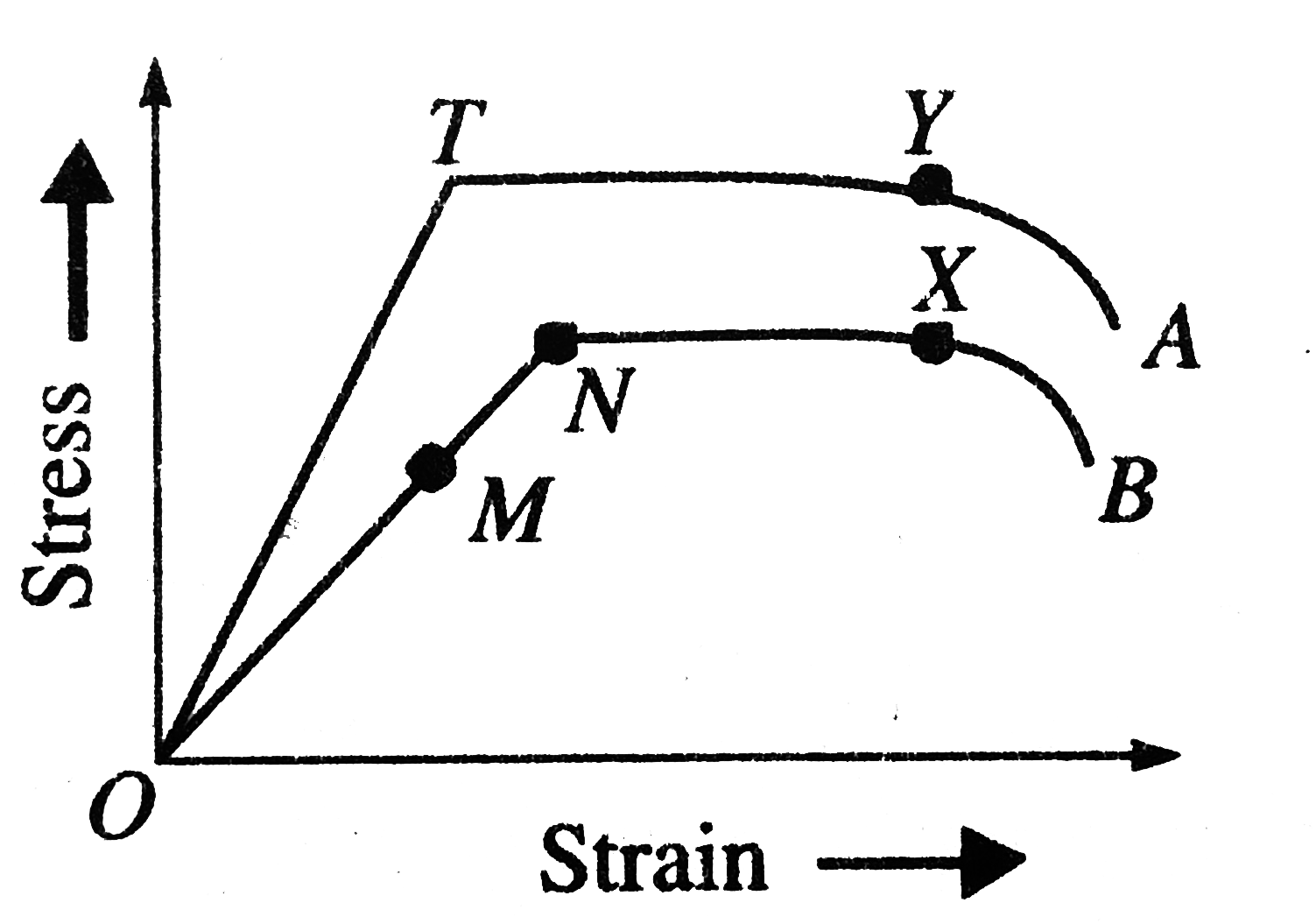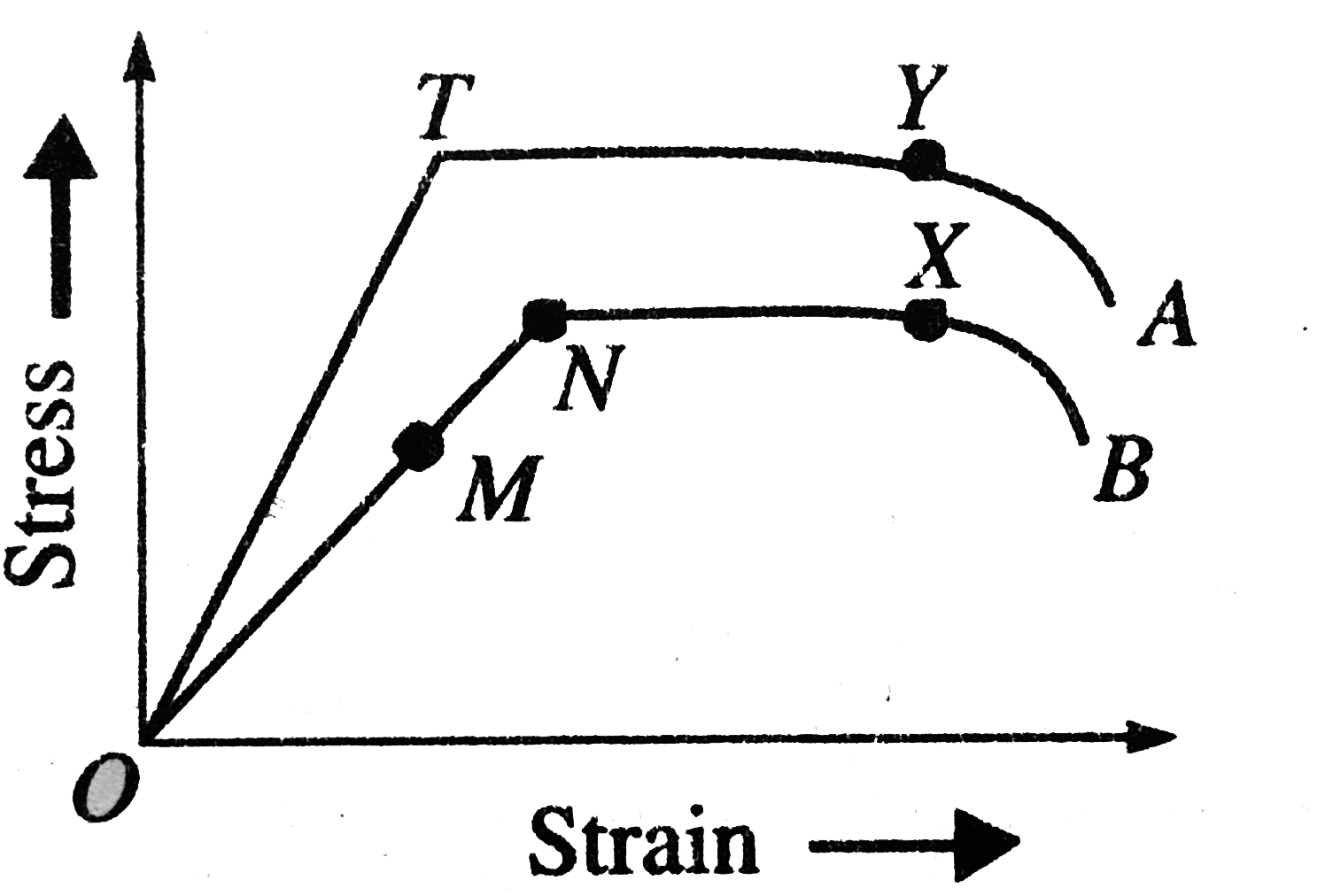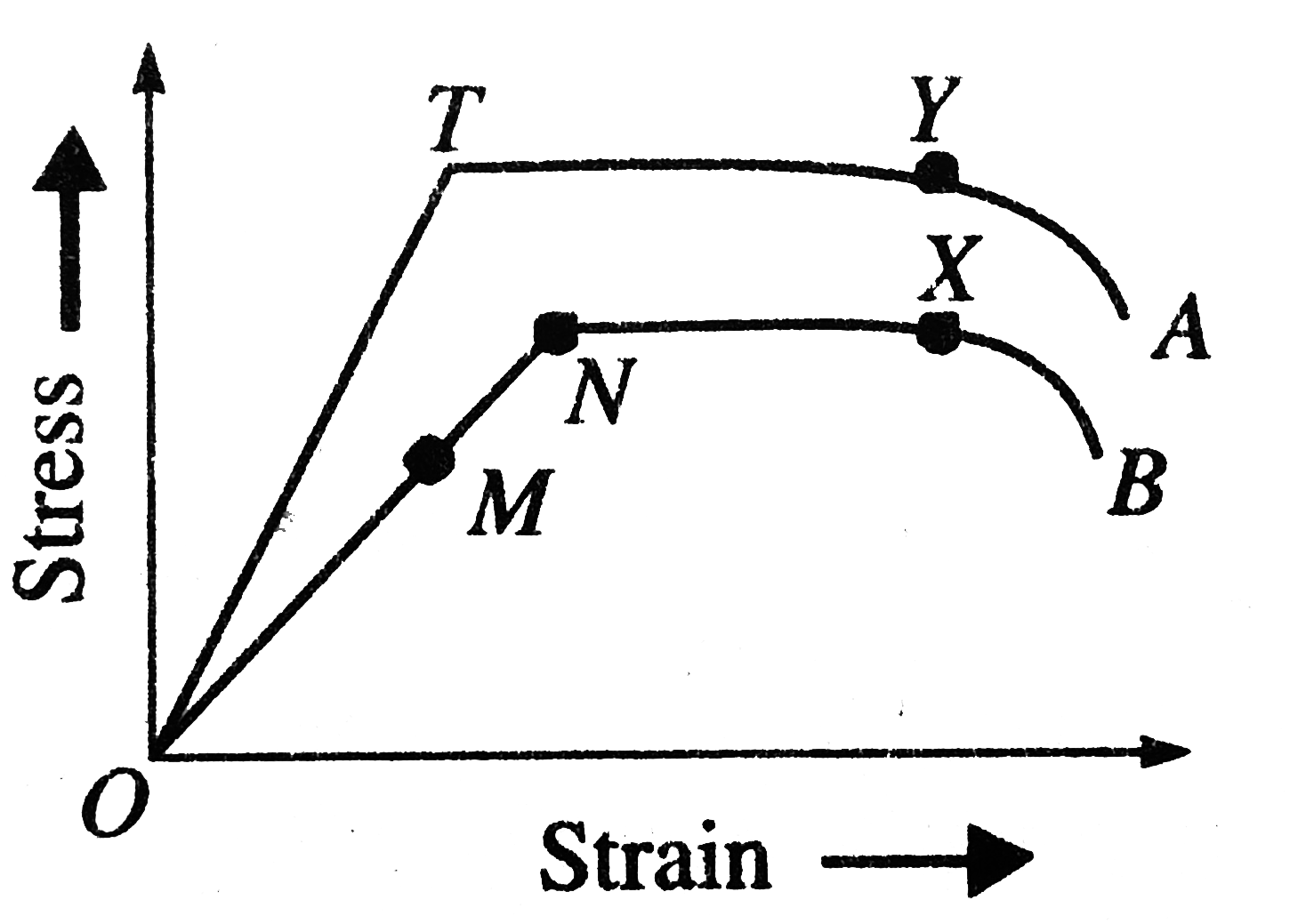Solids which break above the elastic limit are called
brittle
ductile
 malleable
elastic
The correct Answer is:A
To answer the question "Solids which break above the elastic limit are called," we can follow these steps:
1. Understanding the Stress-Strain Graph:
- Begin by considering the stress-strain graph, where the x-axis represents stress and the y-axis represents strain.
2. Identifying Key Points on the Graph:
- On this graph, we identify several important points:
- Point A: Elastic Limit
- Point B: Yield Point
- Point C: Ultimate Tensile Strength
- Point D: Fracture Point
3. Defining the Elastic Limit:
- The elastic limit (Point A) is the maximum stress that a material can withstand without permanent deformation. Beyond this point, the material will not return to its original shape.
4. Understanding Material Behavior Beyond the Elastic Limit:
- When a solid is subjected to stress beyond the elastic limit, it may either deform plastically or break.
5. Classifying Solids Based on Their Behavior:
- Solids that break after reaching the elastic limit are classified as brittle solids. These materials do not undergo significant plastic deformation before breaking.
6. Conclusion:
- Therefore, the answer to the question is that solids which break above the elastic limit are called brittle solids.
Final Answer:
Brittle solids
- Begin by considering the stress-strain graph, where the x-axis represents stress and the y-axis represents strain.
- On this graph, we identify several important points:
- Point A: Elastic Limit
- Point B: Yield Point
- Point C: Ultimate Tensile Strength
- Point D: Fracture Point
- The elastic limit (Point A) is the maximum stress that a material can withstand without permanent deformation. Beyond this point, the material will not return to its original shape.
- When a solid is subjected to stress beyond the elastic limit, it may either deform plastically or break.
- Solids that break after reaching the elastic limit are classified as brittle solids. These materials do not undergo significant plastic deformation before breaking.
- Therefore, the answer to the question is that solids which break above the elastic limit are called brittle solids.
Brittle solids
Topper's Solved these Questions
- BOOK - NCERT FINGERTPS ENGLISHCHAPTER - MECHANICAL PROPERTIES OF SOLIDSEXERCISE - ELASTIC BEHAVIOR OF SOLIDS2videos
MECHANICAL PROPERTIES OF SOLIDS
- BOOK - NCERT FINGERTPS ENGLISHCHAPTER - MECHANICAL PROPERTIES OF SOLIDSEXERCISE - STRESS AND STRAIN9videos
MECHANICAL PROPERTIES OF SOLIDS
- BOOK - NCERT FINGERTPS ENGLISHCHAPTER - MECHANICAL PROPERTIES OF FLUIDSEXERCISE - NCERT Exemplar5videos
MECHANICAL PROPERTIES OF FLUIDS
- BOOK - NCERT FINGERTPS ENGLISHCHAPTER - MOTION IN A PLANE EXERCISE - Assertion And Reason15videos
MOTION IN A PLANE
Similar Questions
What is elastic limit?
View SolutionAssertion : The materials which have very small range of plastic extension are called brittle material.
Reason: If the stress is increased beyond the elastic limit, the material will break.View SolutionThe solid particles which remain on the filter paper are called and the liquid which passes through it is called…………….
View SolutionMolecules with limited metabolic activity are called
View SolutionState whether the following statements are true or false with reasons.
a. Elastic forces are always conservative.
b. Elastic forces are strictly conservative only when Hooke's law is obeyed.
c. When a wire is loaded beyond the elastic limit and then reloaded, the work done disappears completely as heat.View SolutionMaterials get deformed when force is applied. Some of them regain their status when the applied force is removed. They are termed as elastic. Those of which not regaining are called plastic. There may be delay in the regaining in some materials. They are said to have got elastic aftereffect, since they have gone beyond the elastic limit. Repeated application and removal of force leads to fatigueness in the material. Fatigued materials may break at any point time and so are avoided.
The stress strain graph for two materials A and B is shown in the following figure:

The time in which the two materials regain their original status is tA and tB related as tB=2tB. Then the material under elastic aftereffect (relatively) isView SolutionMaterials get deformed when force is applied. Some of them regain their status when the applied force is removed. They are termed as elastic. Those of which not regaining are called plastic. There may be delay in the regaining in some materials. They are said to have got elastic aftereffect, since they have gone beyond the elastic limit. Repeated application and removal of force leads to fatigueness in the material. Fatigued materials may break at any point time and so are avoided.
The stress strain graph for two materials A and B is shown in the following figure:

If the intensity of A and B is EA and EB, respectivelyView SolutionMaterials get deformed when force is applied. Some of them regain their status when the applied force is removed. They are termed as elastic. Those of which not regaining are called plastic. There may be delay in the regaining in some materials. They are said to have got elastic aftereffect, since they have gone beyond the elastic limit. Repeated application and removal of force leads to fatigueness in the material. Fatigued materials may break at any point time and so are avoided.
The stress strain graph for two materials A and B is shown in the following figure:

The strength of the material A and B is SA and SB, respectively, while the longevity of plastic behaviour is LA and LB. ThenView SolutionAbove reaction is called :
 View Solution
View SolutionSubstances which can be elastically stretched to large value of strain are called
View Solution

